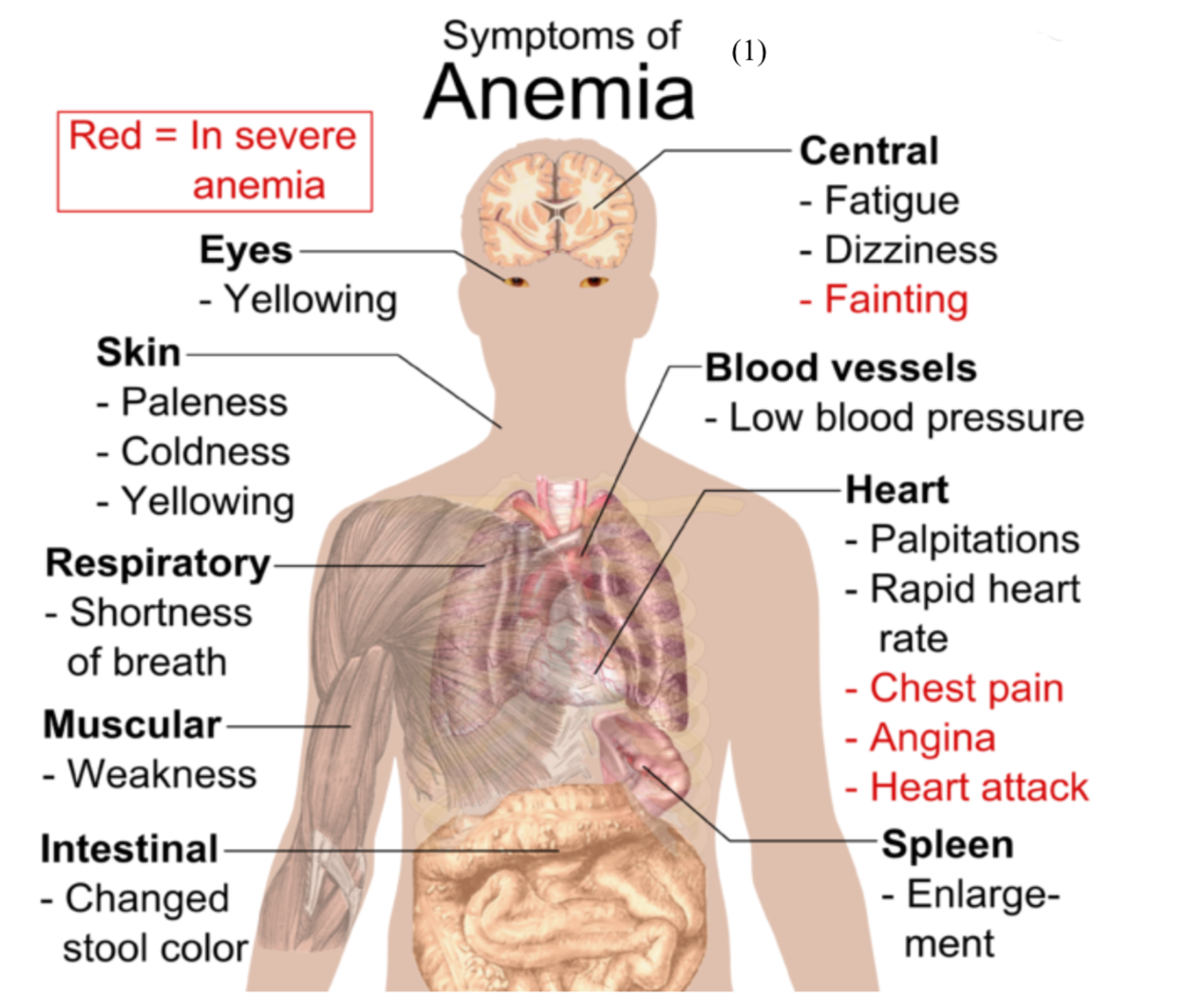Anaemia: Overview
Anaemia is defined as a low haemoglobin (Hb) concentration, which can be either due to a reduced RBC mass or increased plasma volume (e.g. in pregnancy)
– It is <135g/L for men and <115g/L for women
– Subdivided by the mean corpuscular volume (MCV) into microcytic (MCV<80um3), normocytic (80-100) and macrocytic (MCV > 100).
Symptoms:
– Weakness, fatigue and dyspnea
– Pale conjunctiva and skin
– Headaches + light headedness
– Angina –> especially if there is pre-existing coronary artery disease (+ aortic flow murmur)
– Can be signs of a hyperdynamic circulation due to compensation (tachycardia, heart enlargement). But if this is left untreated for too long, it can lead to heart failure.

General Diagnostic pathway:
It is important to look at the MCV to narrow down the aetiology.
– If microcytic –> do iron studies
– If macrocytic –> check blood film to distinguish megaloblastic and normoblastic anaemia.
– If normocytic –> look at the reticulocyte count.
–> If reticulocyte count is raised, this implies there is a destructive problem
–> If reticulocyte count is low, this implies there is a production problem or early blood loss (as the bone marrow has not had enough time to compensate).


